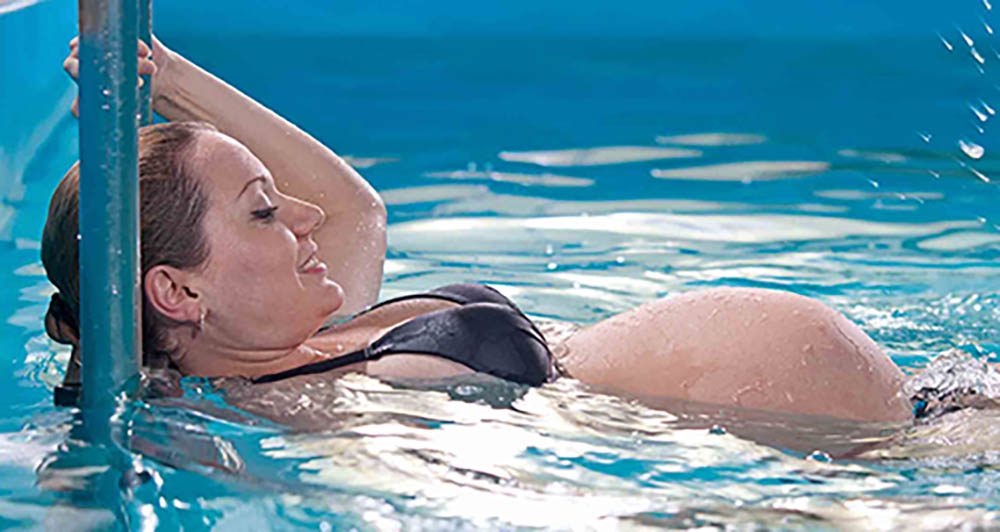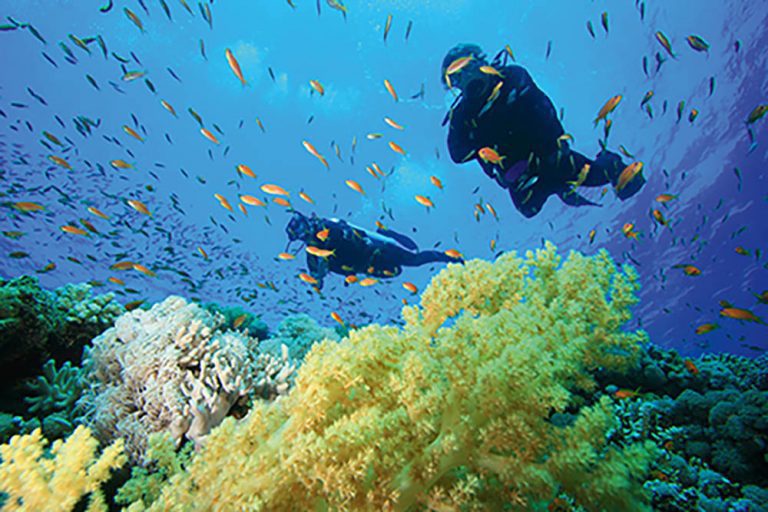DAN MEDICAL
For anyone at increased risk of suffering seizures, venturing under water might seem foolhardy, but there are certain circumstances under which diving may be possible. Dr Louis van Heerden runs us through the latest scientific thinking
DIVERS WHO HAVE EPILEPSY have to consider all the factors of their condition before going under water, because a seizure while diving can have serious implications for them.
The terms “epilepsy” and “seizures” (or convulsions) tend to be used interchangeably. Seizures are paroxysmal (unpredictable and uncontrollable) manifestations of the electrical properties of the cerebral cortex.
Put another way, they are the uncontrolled, involuntary electrical discharge of neuronal activity of a part or whole of the brain.
Epilepsy is a medical condition with recurrent, unprovoked seizures. The classification and manifestations will depend on the area of the brain that is involved.
WHAT CAN CONTRIBUTE?
It might be quite surprising to learn that seizures are a very common, non-specific manifestation of neurological injury and disease.
As we understand it, the main function of the brain is to transmit electrical impulses. Recent research has suggested that the likelihood of experiencing at least one epileptic seizure in one’s lifetime is around 9%, and that the likelihood of receiving a diagnosis of epilepsy in one’s lifetime is about 3%. The prevalence of active epilepsy, however, is only about 0.8%.
Epileptic seizures can have many causes, including a genetic predisposition, head trauma, a stroke, brain tumours and withdrawal from alcohol and/or drugs.
It appears that certain conditions may lower the threshold for epileptic seizures, and in-water exposure certainly counts as the single most important one when we bring diving into the equation.
Sensory deprivation, hyperventilation, nitrogen narcosis, acidosis (from carbon dioxide retention), anxiety and hypoxia (for whatever reason) may all contribute to lowering the threshold of convulsions under normal circumstances. These can all occur more easily at depth.
Other factors include fatigue, psychological stress, substance abuse, flickering lights, illness and certain nutrient deficiencies. Combining even a single one of these factors with in-water exposure puts an epileptic person at greater risk when diving.
Firstly, it increases the risk of having a seizure under water. Secondly, it increases the near-inevitability of a fatal outcome in the form of drowning.
HOW DOES IT WORK?
Let’s take a closer look at the anatomy (structure) and physiology (functioning) of epilepsy. It can broadly be classified as focal seizures, in which the electrical discharge of neurons (brain-cells) involves only a specific part or area of the brain, or as generalised seizures, in which the whole brain is involved.
The structural area of the brain that is involved, in part or as a whole, is called the cerebral cortex. Anatomically, this constitutes the surface area of the cerebrum (the “large” brain).
The “focal interictal epileptiform spike” or sharp wave is the clinical neuro-physiological hallmark of focal-onset seizures. The cellular neuro-physiological correlate to this is called the paroxysmal depolarization shift (PDS).
This process involves depolarisation (a change of the resting potential or “current”) of the neurons through calcium-dependent potassium channels. followed by a prominent after hyperpolarisation.
If there are more than several million of these discharging neurons, electrodes attached to the scalp can record the electrical activity through an electroencephalogram (EEG).
The mechanisms that may co-exist in different combinations to cause focal-onset seizures are decreased inhibition or increased excitation of the neurons.
Mechanisms leading to decreased inhibition of neurons are defective gamma-aminobutyric acid (GABA) A and B inhibition, defective activation of GABA neurons and the defective intra-cellular buffering of calcium.
Mechanisms leading to increased excitation of neurons are increased activation of N-methyl-D-aspartic acid (NMDA) receptors; increased synchrony between neurons due to ephaptic (passage of an electrical impulse from one neuron to the next) interactions; and increased synchrony and/or activation due to recurrent excitatory collaterals.
Focal-onset seizures may advance to generalised seizures. Every one of these variables taken individually constitutes a contra-indication to diving, so one can appreciate the gravity of the situation when they are combined.
WHAT CAN DIVERS DO?
While the risk cannot be quantified, most medical professionals remain reluctant to declare recreational divers with undiagnosed seizures or the diagnoses of epilepsy fit to dive.
This is because of the possibility of a fatal outcome should the risk occur.
I believe that an individual with epilepsy should channel his or her adventurous energy into land-based activities that can offer just as much exhilaration and fulfilment as diving.
There may be exceptions, however. These are seizures that were caused by vagus stimulation (fainting due to a nerve outflow pathway), positional hypotension (low blood pressure), low blood sugar, recreational drugs and fever convulsions before the age of five (without any subsequent seizures).
The data available tells us that 30% of individuals suffering from epilepsy will have seizures or convulsions despite their medication.
It also tells us that about 50% of children suffering from juvenile epilepsy will have no recurrence in adulthood and no increased risk when compared to the general population (although some authorities maintain that there is an increased risk of less than 1%).
Statistically the chances of experiencing another seizure decrease exponentially with time and reach an almost-normal risk level after five years (which does not take the added stresses of diving into consideration).
We also know from the data available that 30% of children and 65% of adults will experience epileptic seizures or convulsions in the first two years after they discontinue their anti-epileptic medication.
Some diving authorities now allow individuals with epilepsy to dive after five years with no seizures after discontinuing their medication. Other medical professionals believe that two years without seizures after discontinuing medication may be an acceptable risk for these individuals, with the provisos of a depth restriction to 15m, clear warm water and no nitrox breathing mixtures.
Although the incidence of sudden unexpected death in epilepsy (SUDEP) is low (about 2.3 times higher than in the general population), most of these deaths are due to impaired consciousness.
Divers who have epilepsy should ultimately decide. Should they wish to continue diving after considering all the information provided, they should accept the increased risk, as should their dive-buddies.
WANT A SECOND OPINION?
Safety when diving should always remain your priority, and this also applies when considering a condition such as epilepsy and its medication.
Remember that you are also responsible for the safety of those diving with you. The DAN Europe hotline is always available with specialised help.
ASK DAN’S EXPERTS
I am a diving instructor and I am in the sixth month of pregnancy. Can I do confined-water sessions? The swimming pool is 1.5m deep. After giving birth, how long should I wait before going back to diving again?

Recent knowledge suggests suspending the dives the moment the pregnancy is verified.
Once this happens, we advise against any diving for a pregnant woman, both because it can be dangerous for the foetus (bubble formation, gas toxicity) and because of the mother’s physiology alterations, which can compromise some essential functions to diving safety (danger related to acid reflux, reduced inspiratory reserve volume, problems with equalisation caused by the edematous status of the mucous membranes).
We recommend that you to go back to diving only in perfect psycho-physical condition, however not before 4-6 weeks in the case of natural childbirth and not before 6-10 weeks in the case of a Caesarean section.
DAN Europe is a not-for-profit worldwide organisation that provides emergency medical advice and assistance for underwater diving injuries. It also promotes diving safety through research, education, products and services

